Your basket is currently empty!
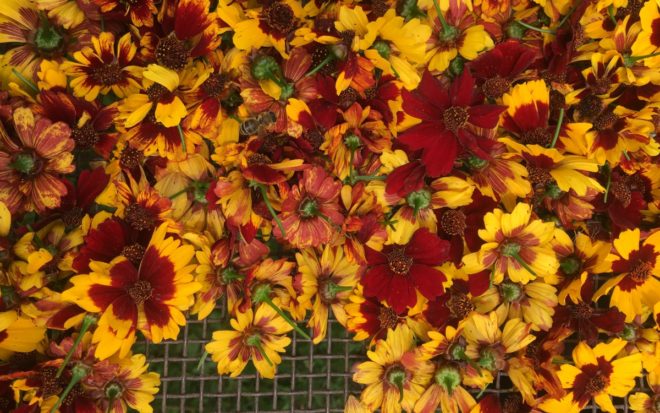
Start a dye garden
Set up a dye garden: Dye plants for gardens and containers
My garden is a Berlin allotment, with very limited space, no greenhouse, and besides dye plants I also want to grow vegetables and fruit. These dye plants here are my staples. I grow them each year, despite constantly struggling for space... I like to dye with them, they do well in my garden and also attract pollinators, because the garden isn't just for me.
When I first started, it was helpful for me to grow quite a few different plants to get to know them - but only a small number of each.
If you have even less space, only garden in pots and containers, or want to focus on just a few plants, this article will help you decide.
Die meisten Pflanzen ziehe ich in der Wohnung vor, anfangs nur auf den Fensterbrettern. Inzwischen habe ich noch ein Regal mit Pflanzenleuchten, weil der Platz sonst nicht für all das Gemüse und Färbepflanzen reicht. Noch ausführlicher über’s Vorziehen und die Ansprüche der Färberpflanzen habe ich im E-Book Farbe ernten geschrieben.
Plants to dye yellow
Weld (Reseda luteola)
Usually Weld is a biannual , forming only a basal leaf rosette in the first year - a rather unimpressive dye plant. But while many plants dye yellow, weld historically was considered special among these, in europe.
The dye it contains, luteolin, is more lightfast than many other yellow shades. The yellow is intense, sometimes almost neon-bright, with a tendency towards a green tinge. If you want to mitigate this, mix weld with other dye plants.
In the second year, the plant then forms a stem with many small flowers - traditionally it is harvested around that time. So you should reserve a spot for weld for two years.
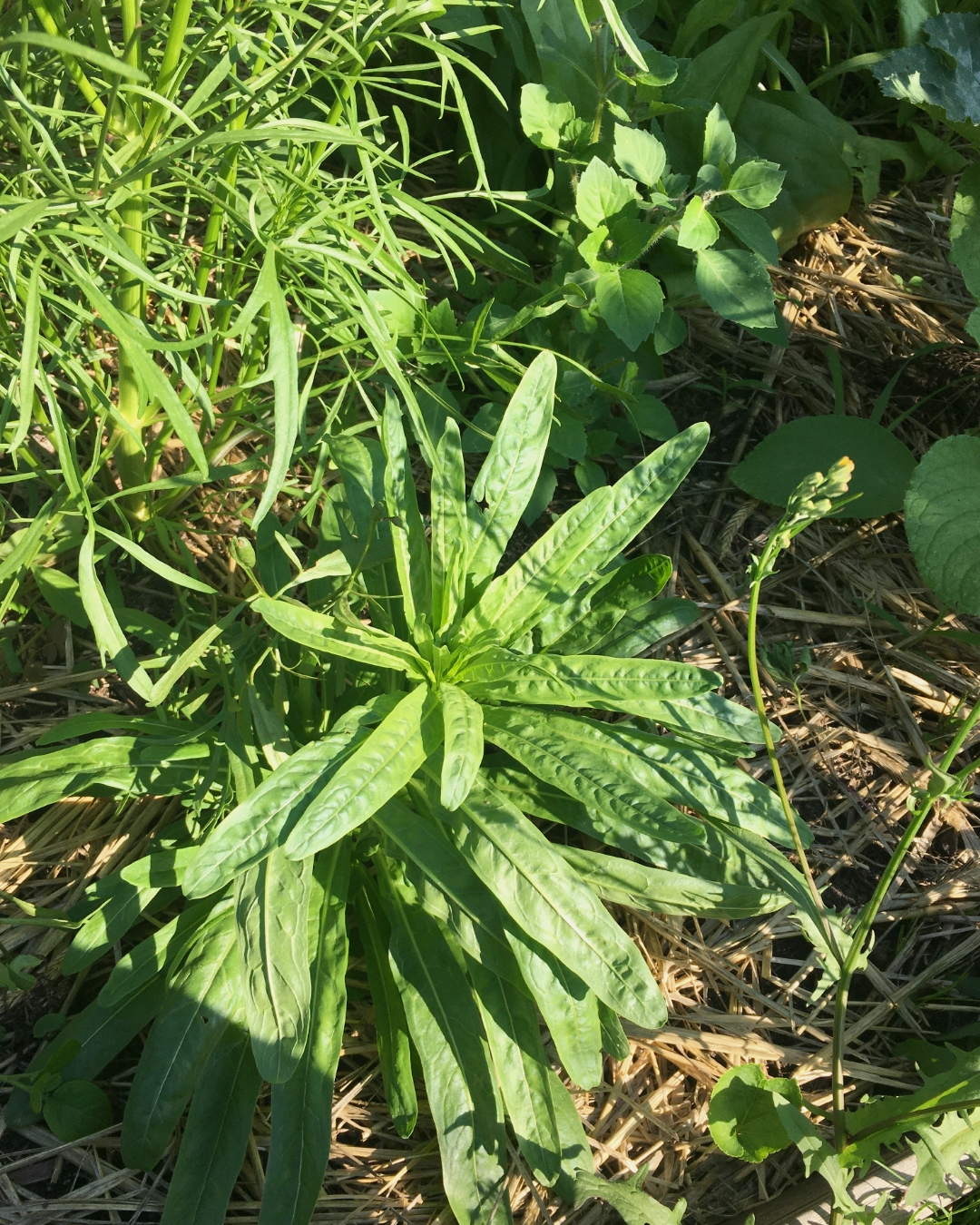

Dyer's s chamomile (Anthemis tinctoria)
Dyer's chamomile is (supposedly) perennial, but I I find often the plants only bloom for one or two years. I had dyer's chamomile in the garden that kept coming back for four years - in between I cut it back hard when it wasn't looking good. But I also sow a few new seedlings every year, as not all of the plants are so long-lived.
I regularly pick the flower heads to harvest, and pruning back once a year can rejuvenate the plant. Blooms long into winter.
Their shade of yellow is softer and warmer than that of the weld.
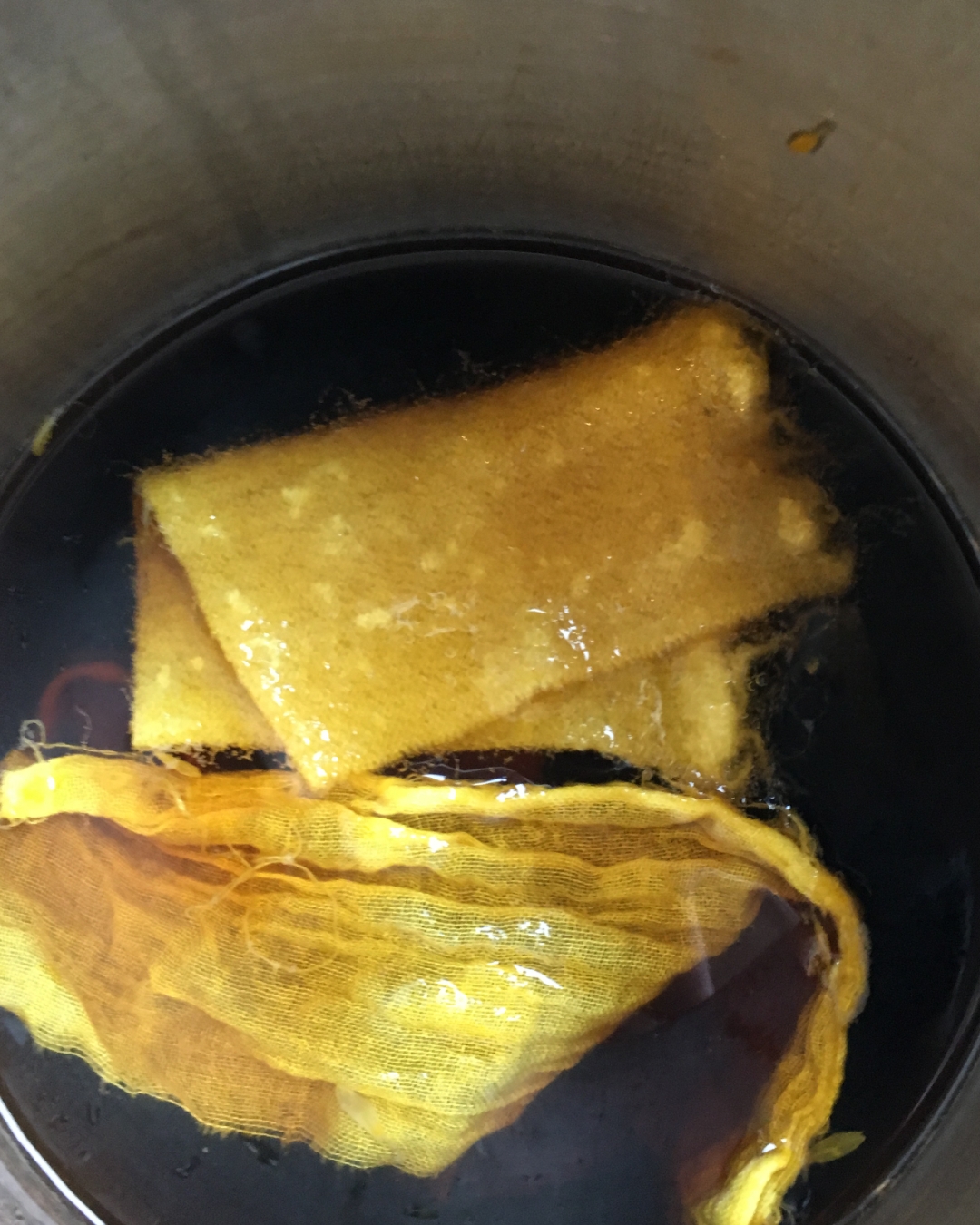
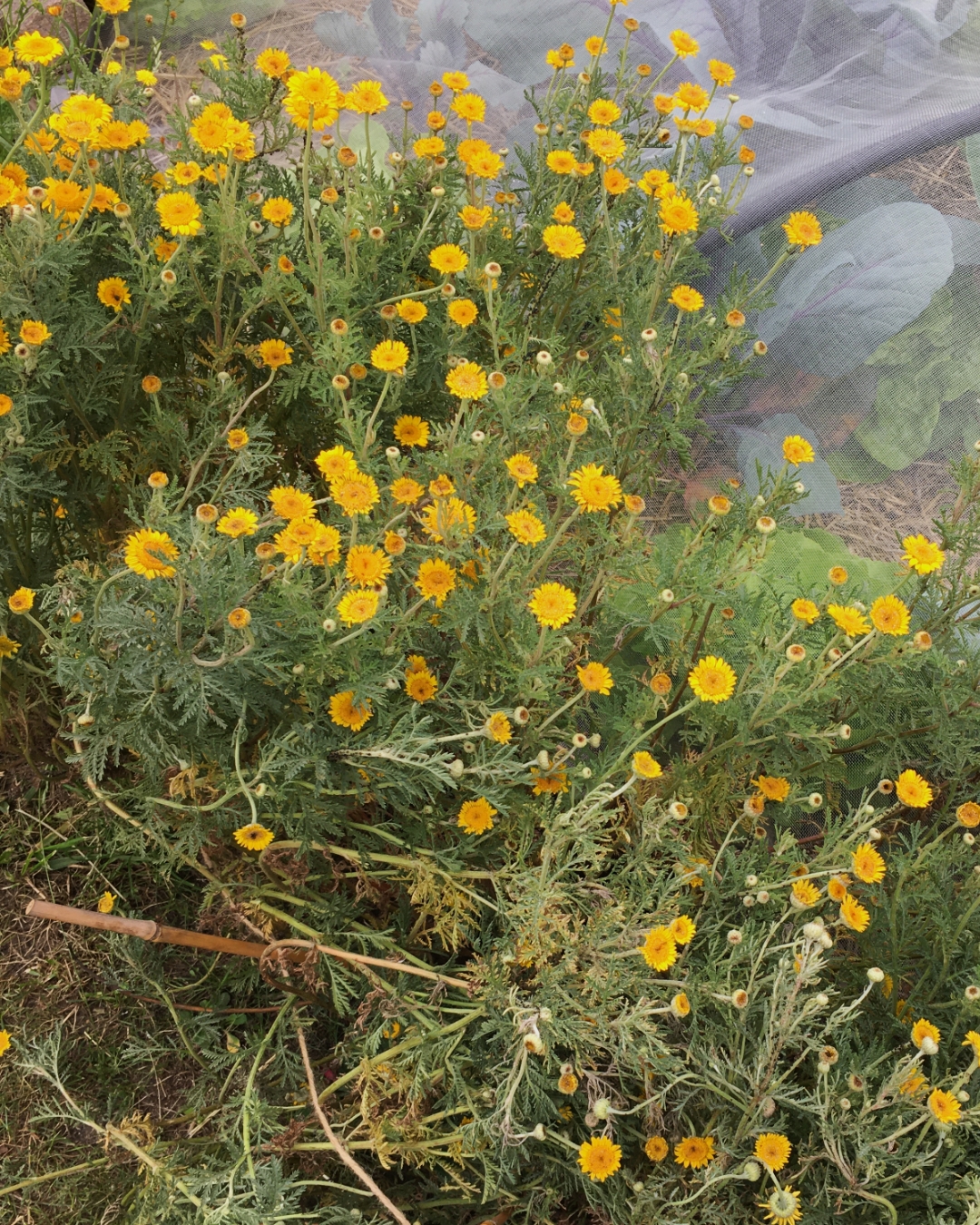
Canadian goldenrod (Solidago canadensis)
Perhaps you already have this plant in your garden, or are surprised that I'm naming it here?
Many gardener's here try to get rid of it, it is considered an invasive weed... Others value it as an important pollinator friendly plant, for infusions and as a medicinal plant. As if that wasn't enough, it's also a dye plant.
The goldenrod propagates not only through seeds, but also underground via rhizome, and is quite good at it. I like to leave them in the garden wherever there is space. In other places I dig them out. I enjoy watching the plants, visited by bumblebees, bees and other insects, enjoy the yellow flowers and some go into the dye pot.
And if you only have a small amount of weld or dyer's chamomile, you can fill up your dye pot with goldenrod! If you want to dry flowers for dyeing in winter, harvest them before they have fully opened. Otherwise the seeds will ripen and instead of yellow flowers you will have many fluffy seeds.
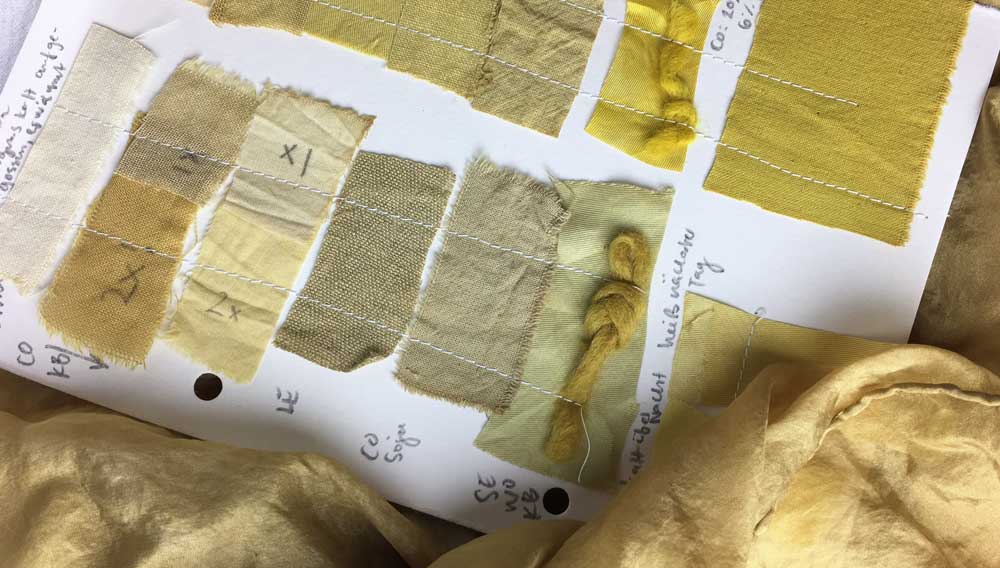
Dye plants for apricot | orange | rust
Tickseed/Dyer's coreopsis (Coreopsis tinctoria)
Dyer's tickseed is a filigree annual summer flowerand can grow quite tall. You could add them to a mixed flower planting, placed behind smaller plants. Or you fill a bed with only this plant, which I really love, too. I mostly interplant them in the vegetable garden wherever I can make space.
During summer I harvest flower heads regularly. I try to only pick about half of them at any time, and then the other half the next time I get there, so there are plenty of flowers still for pollinators.
Dyes apricot, the higher the weight of fiber ratio is, it yields a rusty orange or even almost reddish brown.
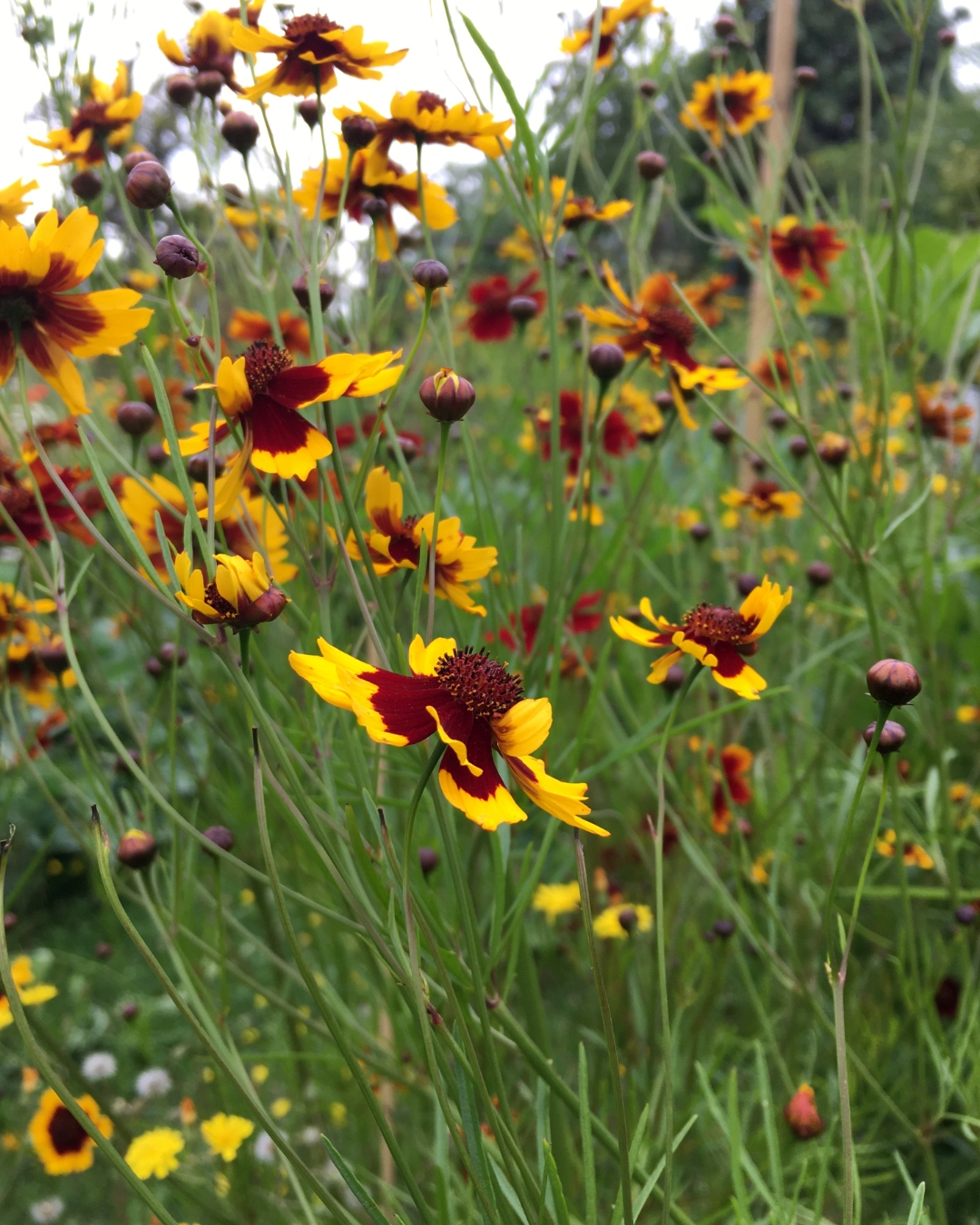
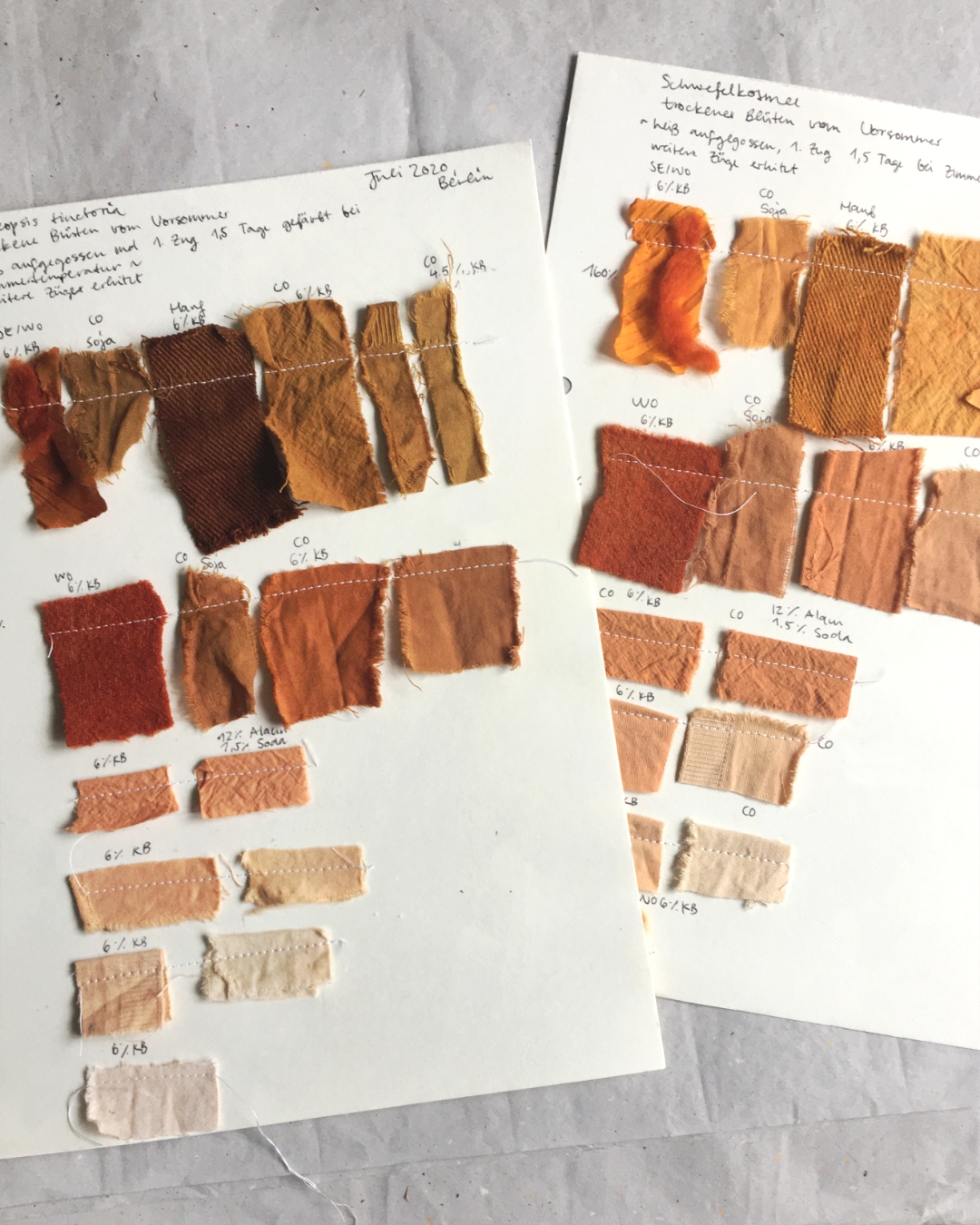
Orange cosmos (Cosmos sulphureus)
The Orange cosmos Orange cosmos do not grow as tall as garden cosmos (Cosmos bipinnatus) that you may be familiar with. You could combine the two and plant the orange cosmos in front of the taller varieties. I like to reserve a strip between vegetable plantings for them, as a small highlight of colour. It is an annual, so it only occupies the bed for one season.
Here, too, you can regularly harvest flowerheads, which are a bit larger but not as numerous as those of the tickseed. If you only use a few flowers for dyeing, you get delicate peach tones, similar to tickseed. If you use more of the flowers, the difference becomes apparent: you get intense, bright orange tones.
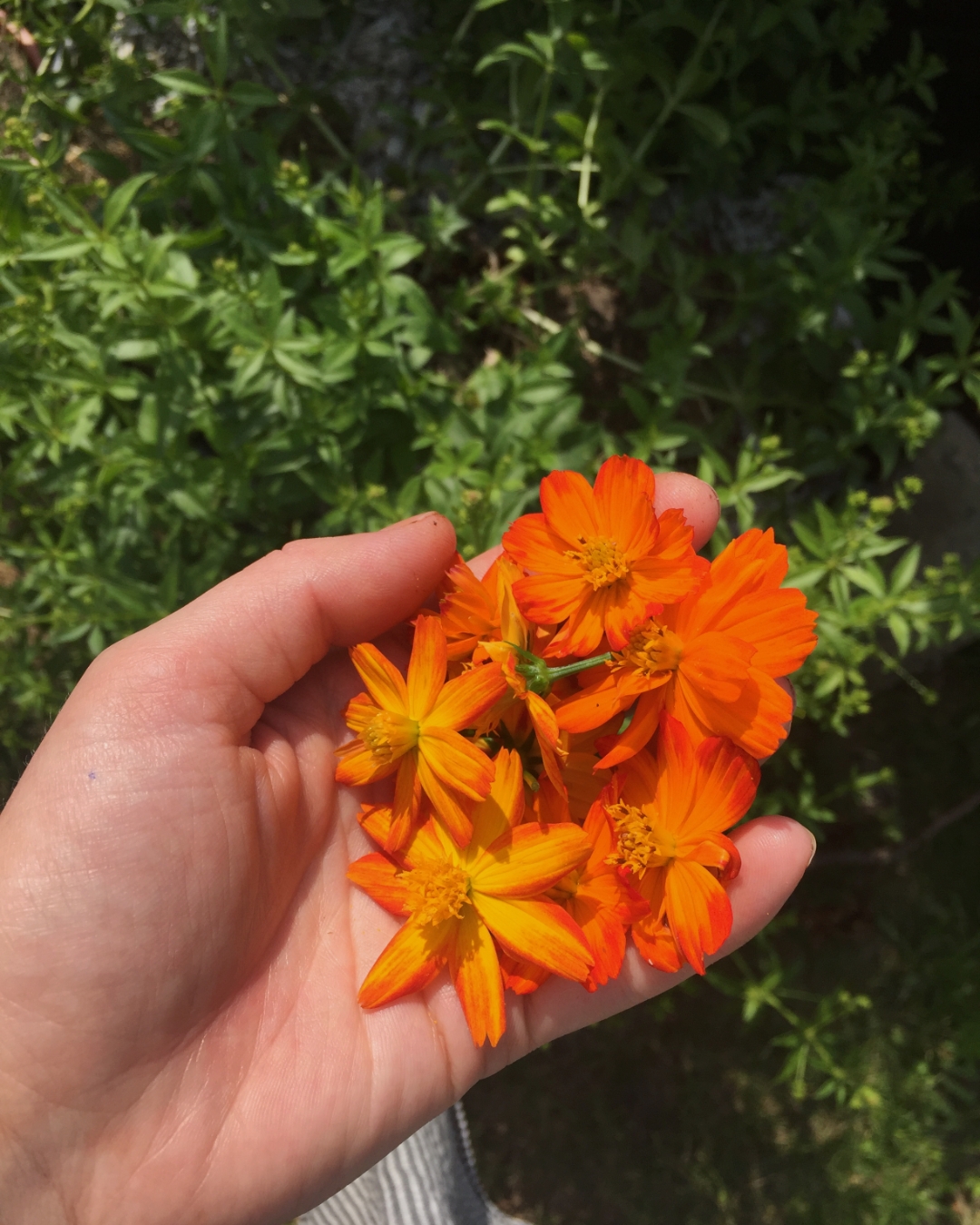
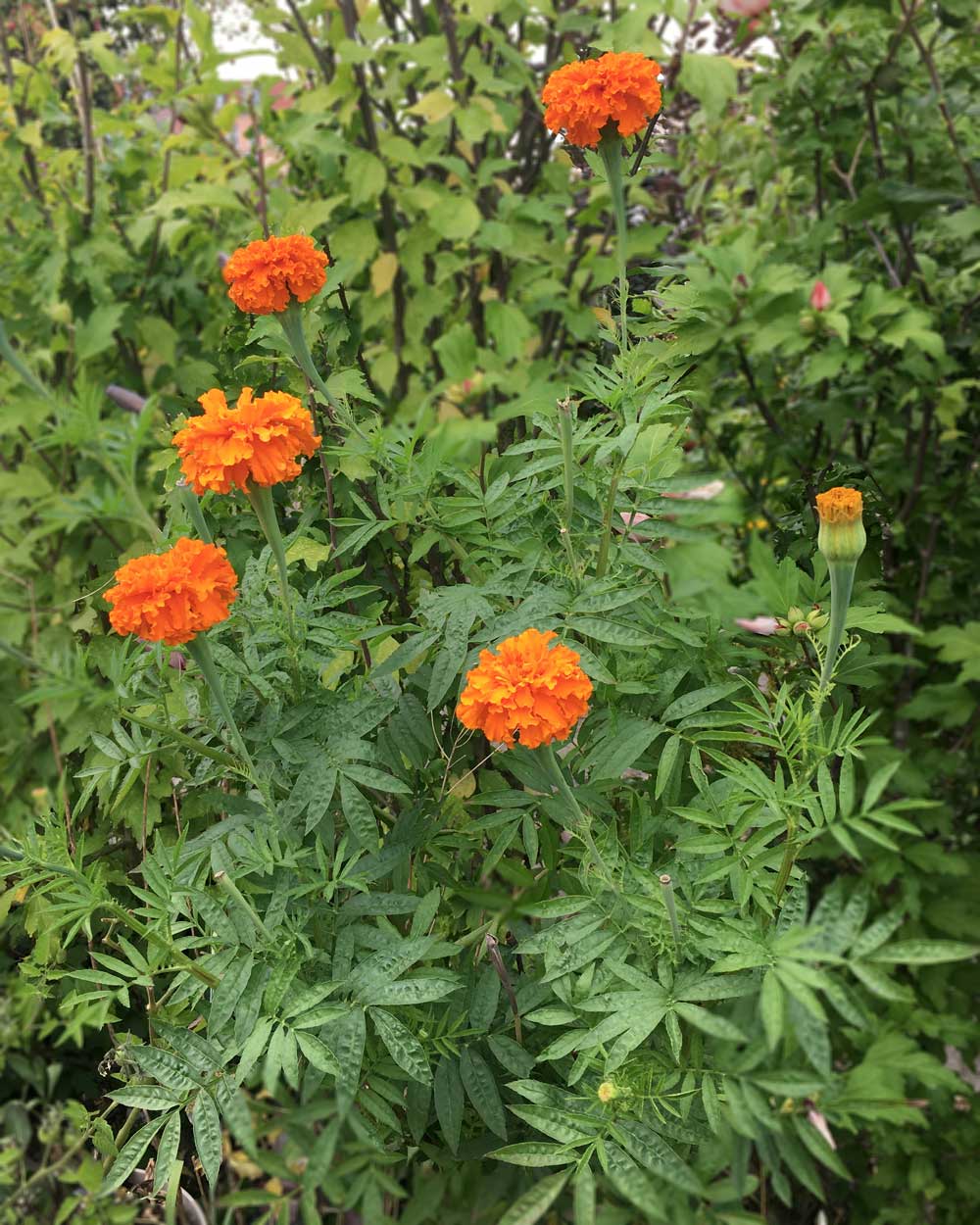
Dyer's Marigold (Tagetes erecta)
The Marigold Dyer's marigold grows particularly tall (up to about 80cm) and bushy - it definitely needs more space in the dyer's garden than the shorter, smaller marigold varieties that are often found in flower beds in public places.
When conditions are good, these marigolds will become really magnificent and produce many of their large flowers. Tagetes in general are beneficial for soil health, but with this variety keep in mind they their space if interplanting with other plants. Marigolds then bloom continuously until the first frost.
Dyes various shades of yellow and orange. With particularly intense yellow flowers, I have also unexpectedly dyed a bright yellow-green.
Dyeing red with plants
Madder (Rubia tinctorum)
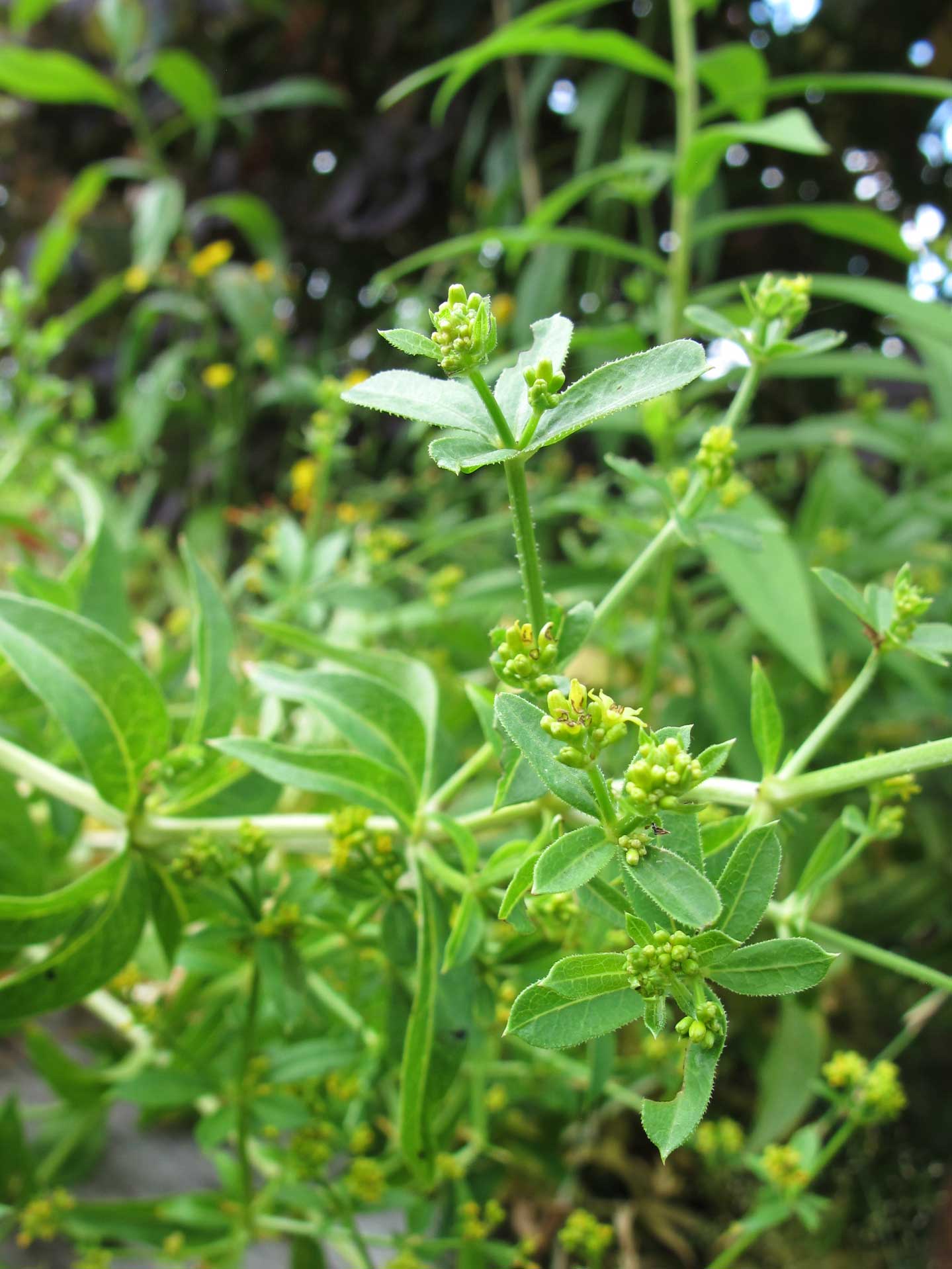
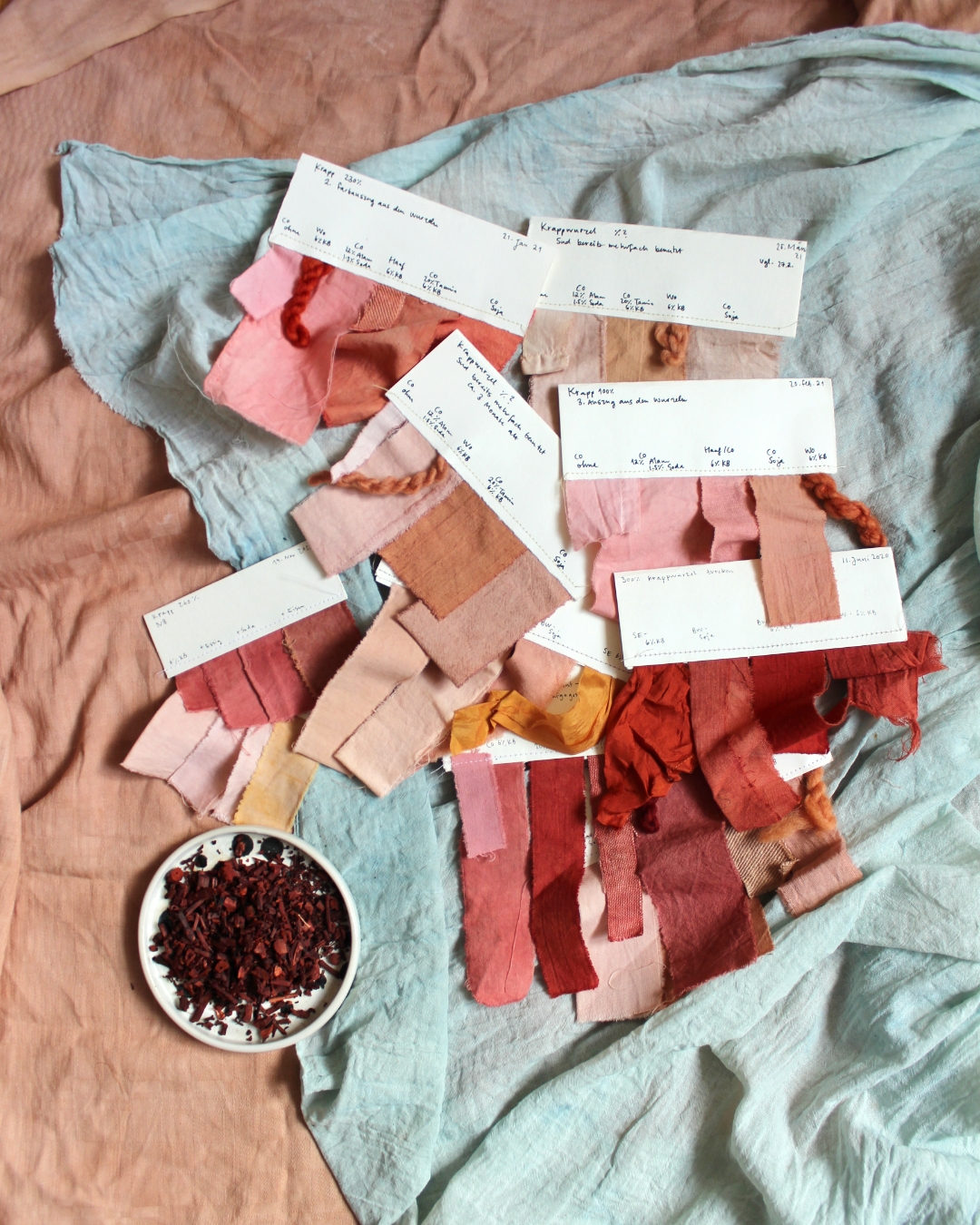
contains dye in the roots, especially the red dye alizarin. If you want to plant it, note that it takes up its space in the dyer's garden longer than other plants. Madder is perennial, and in order for the roots to be thick and mature, harvesting is recommended after two, preferably three years. Madder can grow in beds, but I like to plant it in big tubs and containers. This will make root harvesting easier when the time's come. Madder grows quite tall, or rather long - even with support, the stems don't climb that high for me, they tend to fall over. These parts of the plants can then root again, which you can encourage by covering them with soil once they are long enough and reach the ground. Leaves and stems have small scartchy barbs. I wouldn't plant madder too close to a path or your sitting area.
Madder is part of the family of Ruubiaceae, along with other plants you may already be familiar with. Including Cleavers, Lady's bedstraw and Sweet woodruff. Another member of the family, lesser known, is Dyer's woodruff.
Their roots also contain some of the coveted dyes. But the roots are finer, not as strong as those of madder.
Once you harvested roots, you can of course dye with fresh roots. Traditionally, the roots were left to dry and stored after harvesting. In the process, substances in the root change over time and the dyes become more red.
Plants to dye blue
Dyer's knotweed (Polygonum tinctorum oder Persicaria tinctoria)
Dyer's knotweed Dyer's knotweed is also called Japanese or Chinese indigo. The plant is an annual and grows well in beds and containers as long as conditions are right: sunny and nutrient-rich soil. When the plants are stressed, the leaves turn red. This can be caused by intense sunshine after transplanting, especially if the plants have not been hardened off - but this should pass. Strong winds and dry soil can also cause this. The dye content in the leaves is higher when the plants are doing well, days are warm and sunny but not dry.
As with woad, indigo dye is obtained from the leaves. The pigment can be extracted or a vat made directly with fresh leaves. Dyer's knotweed is ideal for dyeing with the salt rub method, the most simple way to dye with indigo.
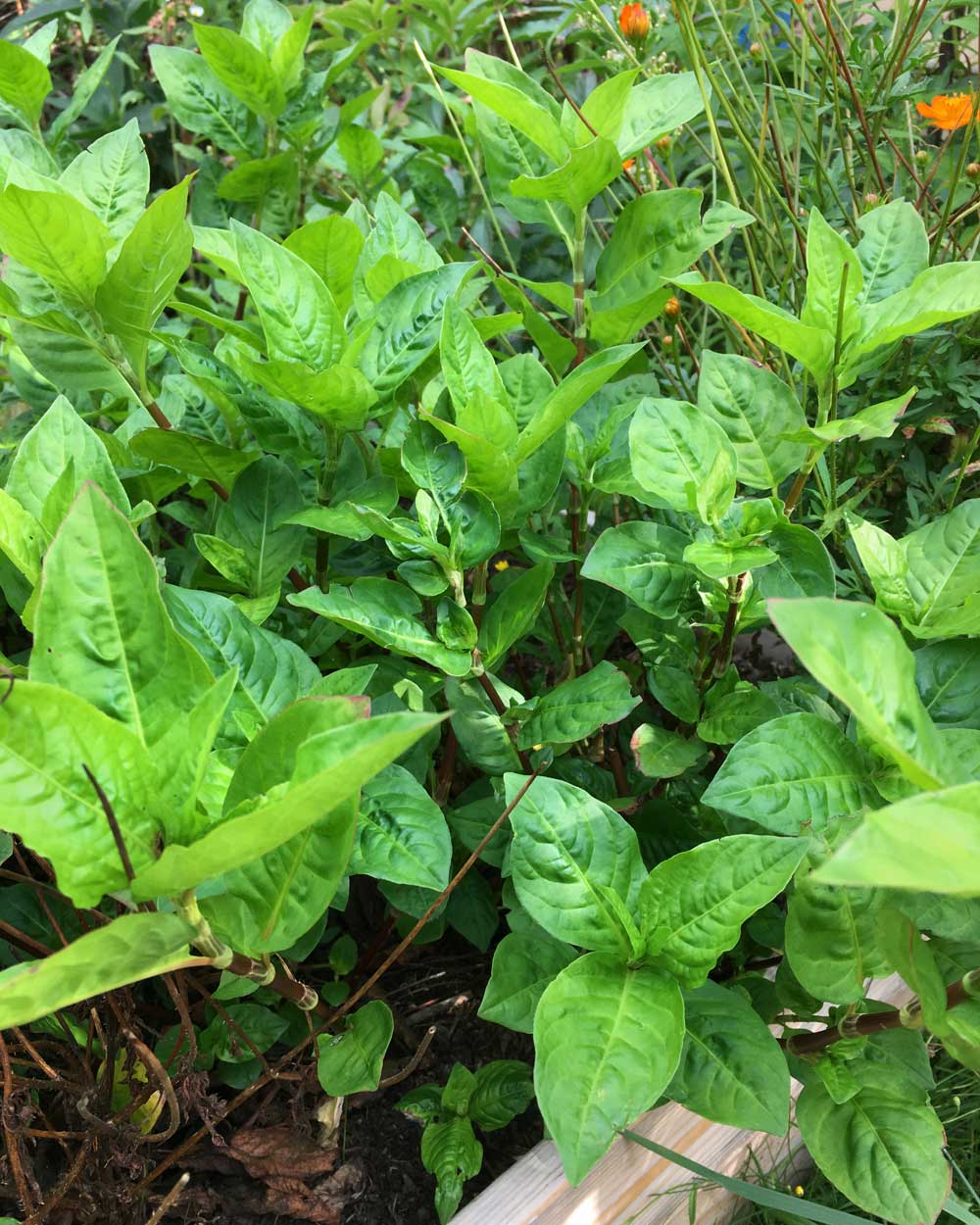
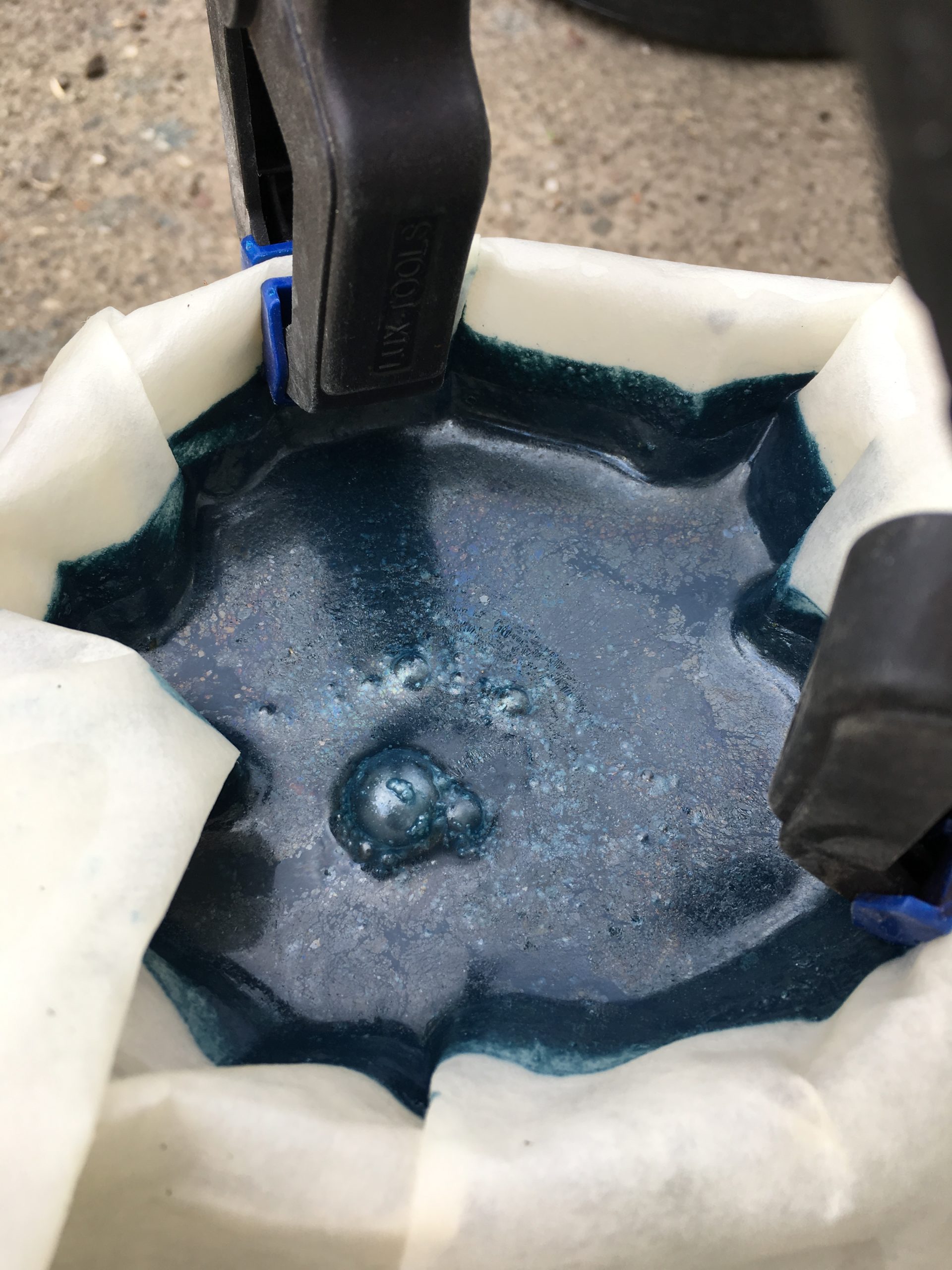
Woad (Isatis tinctoria)
woad Waid belongs to the cruciferous family, something you might want to consider when planning the garden. And it is a biennial. To obtain indigo, the leaves are harvested in the first year - in the second year they contain less dye. Woad sets flowers in the second year, forming a tall cluster of flowers with many bright yellow flowers. An insect magnet that blooms after the fruit trees but before most summer flowers in my garden. That's why I let all the woad plants blossom and harvest the seeds. The best seeds go back to sowing, the rest I use for dyeing – especially for bundle dyeing. If you don't want woad to selfseed, harvest all the seed pods or trim the stems once the flowers finish blooming.
Woad is resilient to cool temperatures. When I aI m running out of space indoors, I prefer not to start woad indoors, but sow in beds or in containers in the garden.
In my growing conditions, I find woad to be more hardy than Dyer's knotweed. It also thrives largely left to its own, as long as it's placed in nutrient-rich soil and I make sure it is not overgrown by taller plants. In summer hot spells I have to water it less often than most plants. Which makes sense, woad has been cultivated in Europe for a very long time and suits our climatic conditions well. (…until now? I wonder as I type.)
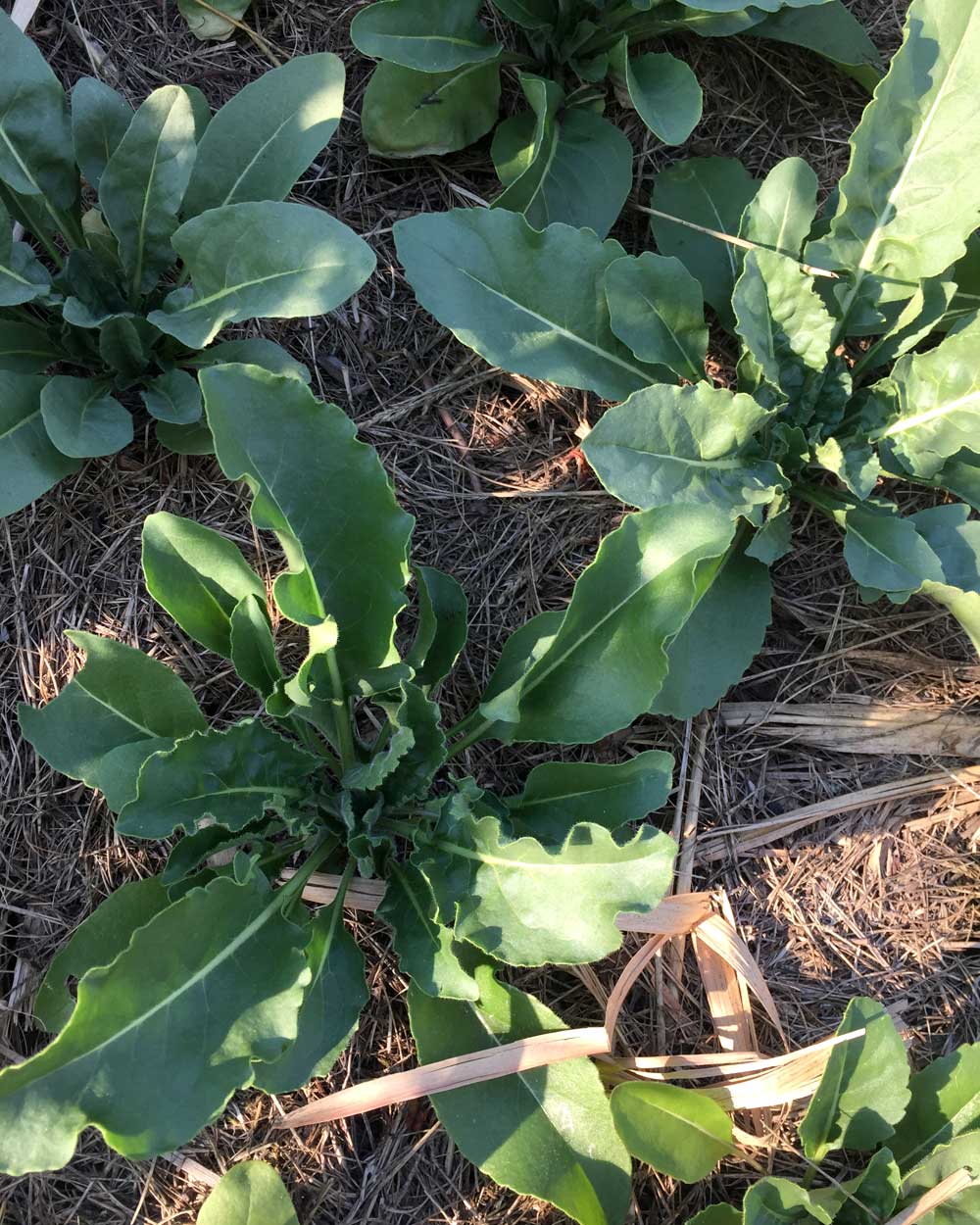

Plants to dye violet | grey | teal
These plants contain anthocyanins, which dye a range of colours depending on fiber type and dye ratio. They are also sensitive to pH changes and are among the more fugitive colors.
Sunflower Hopi Black Dye (Helianthus annuus)
This variant of Sonnenblume wird sehr hoch, und wird im Laufe des Sommers am besten abgestützt, damit sie bei Wind nicht umknickt. Sie ist also nicht gut für kleine Pflanzgefäße geeignet.
It usually has one large main flower and many smaller secondary flowers. It is a traditional dye plant of Hopi people and the dark seed (hulls) are harvested for dyeing.
I like to use the seeds for bundle dye. I don't harvest all the flower heads, I also leave some in the garden for the birds to feed on. The only chaffinch I ever saw in our alotment was nibbling at the sunflower buffet.
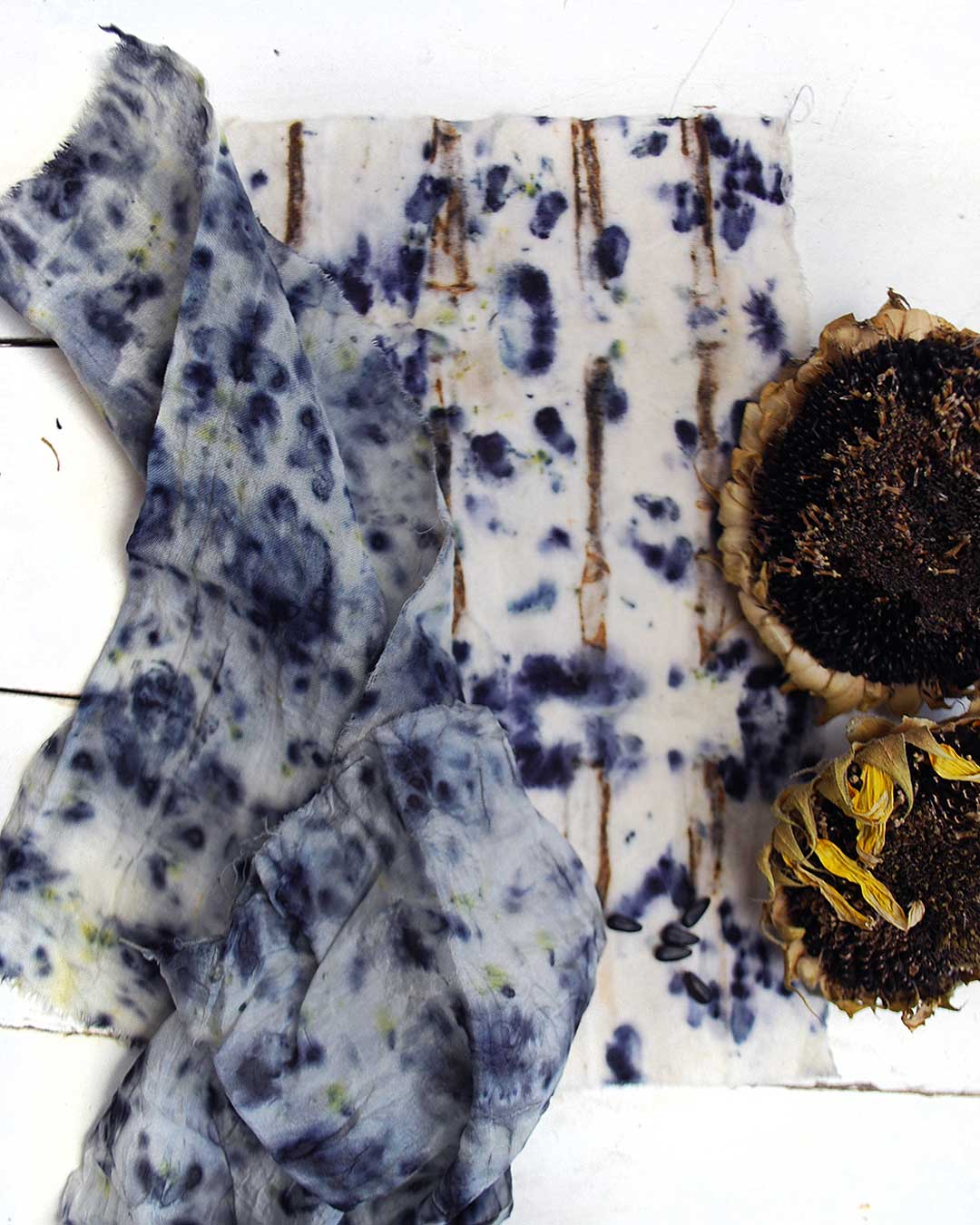
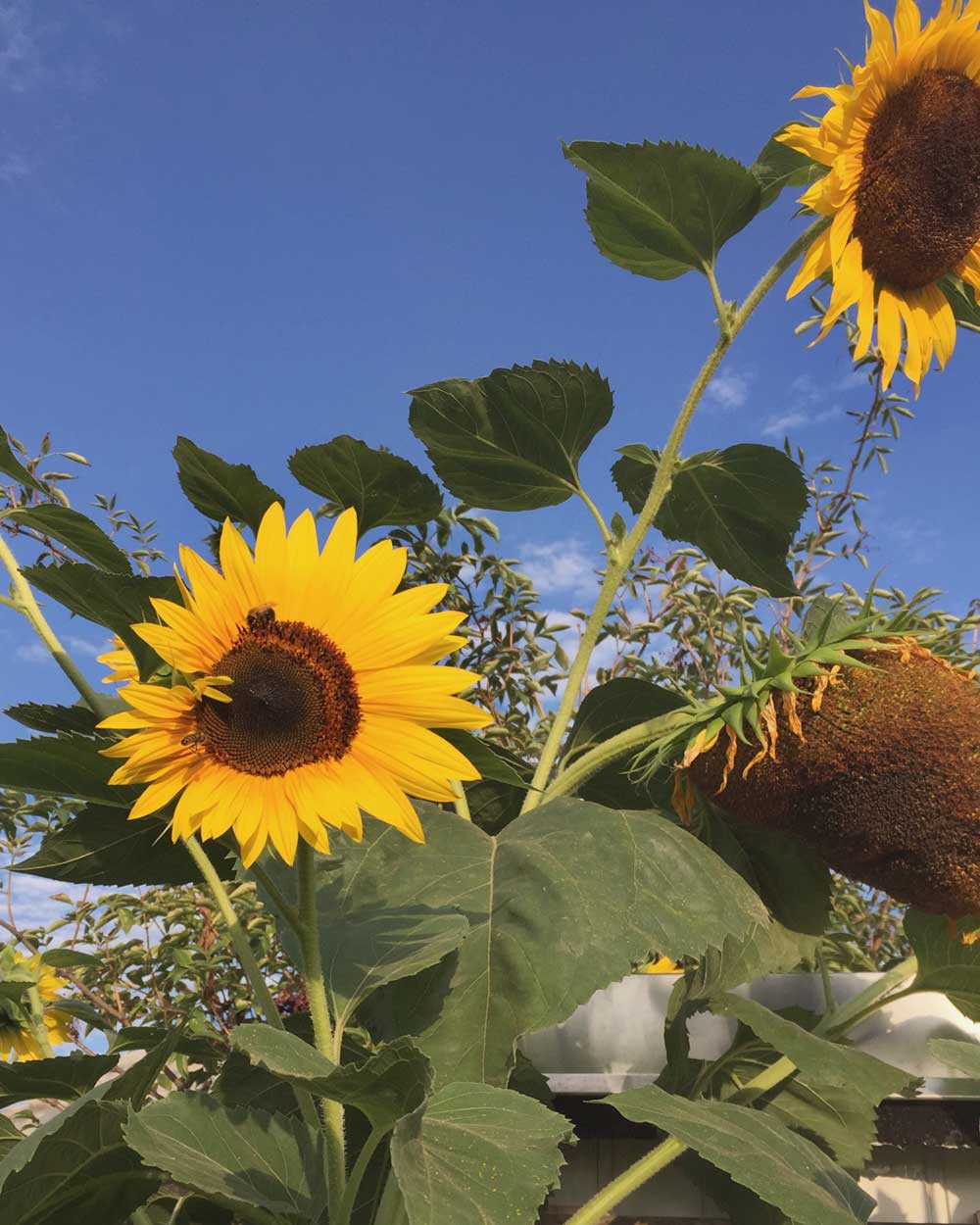
Schwarze Stockrose (Alcea rosea ’nigra‘)
Hollyhock (also called mallow) is biennial or perennial. In the first year they only form a rosette of leaves, in the second year they grow up to 2m high flower stalks. So you can only start harvesting flowers in the second year. I pluck off the blossoms and dry them after they have closed again. So the flowers can still set seed. If all flowers are cut back before seeds are ripe, hollyhock may sprout again for another year.
Much like sunflowesr, I wouldn't recommend growing hollyhock in containers, it has a long taproot and does better when given decent space to root.
Do not space hollyhocks very close together. They are susceptible to mallow rust, a fungal disease. If they are not spaced airy and can dry off well, they are particularly at risk.
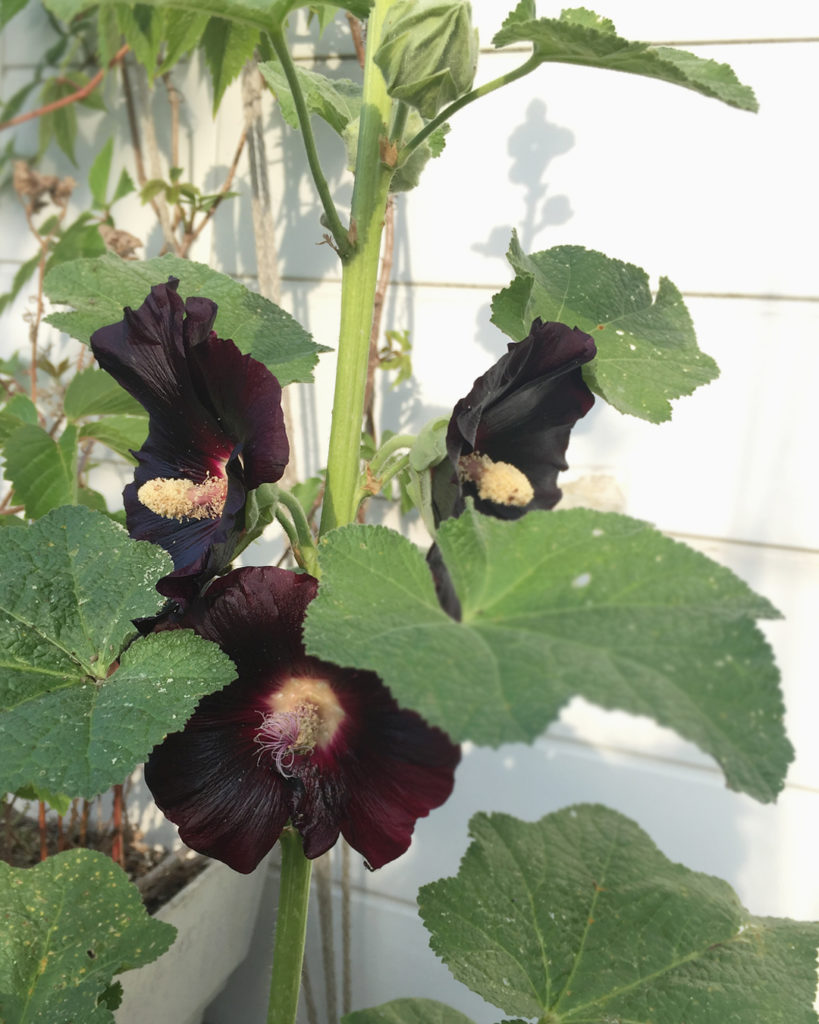
There are other flowers that dye similar: For example deep dark varieties of dahlia and scabiosa or Black or chocolate cosmos. If you want to use those for dyeing, look out for varieties with the darkest, almost black flowers.
Dye plants for containers and planters
Are you looking for dye plants that are suited for a balcony garden? The first choices that come to mind are Tickseed and Orange Cosmos. In large pots (from about 18 liters) I have also grown beautiful tall Dyer's marigold.
Dyer's marigold and Tickseed grow quite tall. If that doesn't go well with your location: There are more compact, short varieties of Tickseed - and also different types of marigolds. Dyer's marigolds are particularly good for the dye pot because they have such large double flowers, but they also grow quite tall. Smaller varieties with smaller buds aren't as productive, but still yield dye, and great for bundle dye. I especially like Tagetes tenuifolia – they smell wonderful, maybe you like them in tea too. And the small filigree blossoms are beautiful in bundle dyeing.
Of course, you can also plant Dyer’s chamomile, weld and woad, in sufficiently large pots or raised beds. The last two have taproots, so they need more space underground than a small pot or balcony flower box would provide. And madder is also good for planting in containers. Do not choose a container that is too small (I would choose from 20L, preferably bigger), then madder plants should get through the winter alright in it. These also don't dry out so quickly in summer.
In general: Plants in pots need a little more attention. They dry out faster and will probably need more fertilizing. The smaller the container/amount of soil, the more attention is required.
And when is a good time to sow?
Information about a good time to sow usually can be found on seed packages, and here are my sowing recommendations. But of course this is depending on where you are gardening! With my garden in Berlin I can stick to these general recommendations. But there are also areas in Germany where it is milder and where sowing and planting is possible earlier. Elsewhere, for example at high altitudes, both are recommended later.
How to not sow too early: count back from the last frost date
If you are new to growing plants from seeds and there's noone local with gardening experience you can ask: The most important date I look out for is when the last frost (or nights below six degrees C, for sensitive plants) can be expected. If you don't have a greenhouse or lots of cool temperature indoor space with grow lights, then this date is important. You can also look at the number of hours of daylight, but as an amateur gardener, the temperature has been a helpful guideline for me so far.
For me, that's usually mid-May (in 2021 it was a little later, which meant it was getting very crowded in may growing area). Plants that grow rather slowly like weld I sow up to eight weeks before this date, most others closer to six to four weeks.
Sunflowers grow quickly, and I sow them at most two to three weeks before expected planting-out-date. If they have to stay indoors for too long, they lack light and the plants cannot grow strong and robust.
So, if you don't have a (heated) greenhouse or similar, or grow in a very mild climate: Better not sow too early, no matter if you sow directly outside or prefer starting seeds indoors like me.
For me it's sufficient to seed dye plants in April, and sunflowers in early May.
Do you have any recommendations for the dye garden, or a question? A favorite plant? Do you prefer plants like me or do you sow directly outside?
/
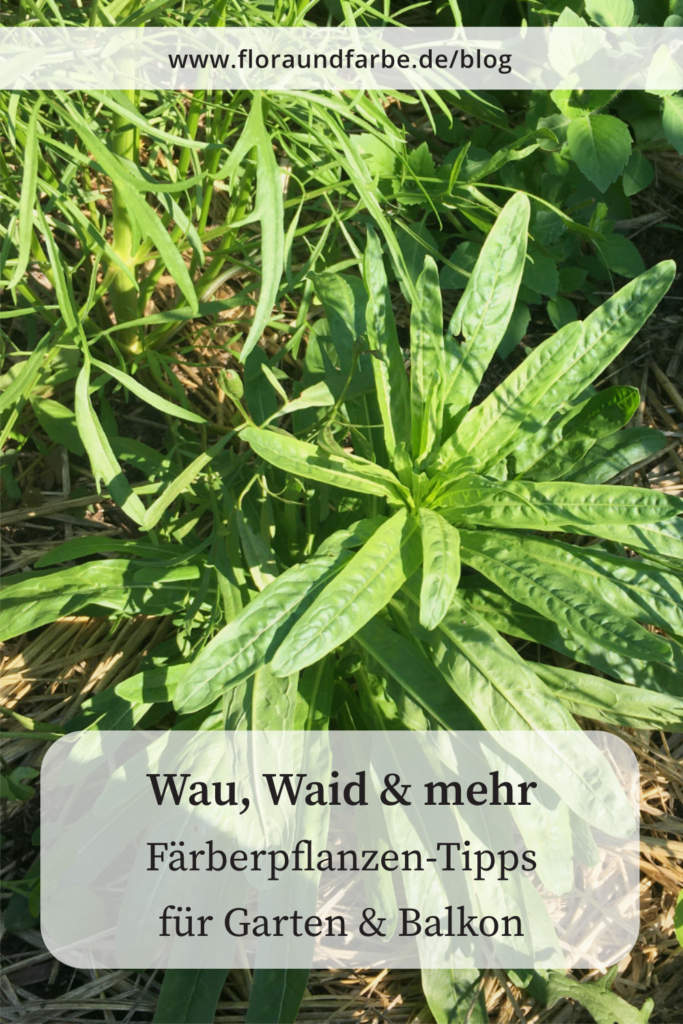
Seeds for the dye garden
-
 E-Book Bundle: Mit Pflanzen färben + Farbe ernten25,00€ inkl. MwSt.
E-Book Bundle: Mit Pflanzen färben + Farbe ernten25,00€ inkl. MwSt.incl. VAT
-
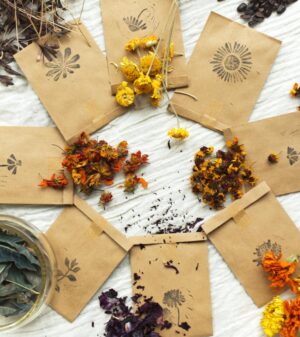 Färberpflanzen Saatgut-Set27,50€ – 34,50€ inkl. MwSt.
Färberpflanzen Saatgut-Set27,50€ – 34,50€ inkl. MwSt.incl. VAT
-
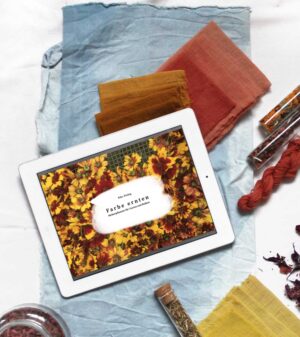 Farbe Ernten. Färberpflanzen für Garten und Balkon E-Book9,00€ inkl. MwSt.
Farbe Ernten. Färberpflanzen für Garten und Balkon E-Book9,00€ inkl. MwSt.incl. VAT
Comments
6 responses to “Start a dye garden”
-
Vielen Dank für den hilfreichen Artikel! Ich stand mit meinen Samentütchen schon in den Startlöchern, aber jetzt warte ich lieber noch ein bisschen… Bin schon gespannt!
-
Liebe Kathrin,
schön, wenn es hilft! Es ist für unser Klima hier echt noch Zeit, wenn man nicht wirklich eine gute Ausstattung zum Pflänzchen-Unterbringen hat.Aber wenn es soweit ist, frohes Gärtnern!
-
-
Im dritten Jahr baue ich nun Färberpflanzen in meinem Kölner Schrebergarten an. Hier ist es so mild, dass ich eigentlich alles direkt aussäen kann (Färberwaid, Tagetes, Cosmea, Färberdistel – mein Lieblingsgelb – und Stockrosen). Wer Fragen hat, gerne melden! Ausprobieren möchte ich nach der Entdeckung deines Blocks auf jeden Fall die Sonnenblume. Für Knöterich ist es bei uns wahrscheinlich zu windig und der Boden (noch) nicht gut genug.
-
Das klingt super, die Färberdistel habe ich dieses Jahr auch zum ersten Mal dabei! Und freue mich schon aufs Färben damit. Die Hopi Black Dye Sonnenblume ist auf jeden Fall einen Versuch wert, das ist eine tolle Pflanze. Und falls du eine etwas windgeschütztere Ecke hast (ich hab mir letztes Jahr mit einem 20cm hohen Holzrahmen ums Indigobeet geholfen, einer einzelnen Etage von einem Hochbeetrahmen), probier doch den Färberknöterich mal aus. Der ist zwar manchmal etwas empfindlich, aber echt eine super Färberpflanze für Indigo-Experimente!
-
-
Vielen Dank für deinen tollen Beitrag! Die Hinweise sind sehr gut durchdacht und lassen sich super umsetzen.
Ich baue seit Langem ebenfalls Färberpflanzen in meinem Garten an, habe aber seit einigen Jahren das Problem, dass ich den Krapp nicht mehr loswerde. Alle 2 Jahre grabe ich das komplette Feld im Spätsommer/Herbst bis auf eine Tiefe von ca. 40-50 cm um. Dennoch erwische ich anscheinend nicht alle Rhizome. Leider wachsen auf diesem Feld inzwischen keine anderen Färberpflanzen mehr. Nur „Unkräuter“. Direkteinsaat hat früher super geklappt, mittlerweile gehen mir aber selbst die vorgezüchteten Pflanzen auf dem Feld ein. Dabei würde ich so gern wieder Waid anbauen. Hast du einen Tipp für mich?
Herzliche Grüße
Nicolas-
Hallo Nicolas,
aus der Praxis kenne ich das Problem nicht, da der Krapp bei mir in Kübeln wächst. Der einzige Tipp gegen „Wurzelunkräuter“, zu dem der Krapp ja bei dir quasi geworden ist, der mir einfällt, wäre die betroffene Stelle richtig abzudecken/abzudunkeln, über wenigstens Monate. So dass die Pflanzen nicht austreiben können und kein neues Sonnenlicht + damit Energie tanken können. Ich habe den bisher nur an Stellen benutzt, wo ehemals Rasenfläche zu Beeten werden sollte – dafür habe Verpackungen von gekaufter Erde u.ä. aufgeschnitten und ausgelegt, oder dick Pappe. Und das dann noch beschwert.
Ich hoffe, du findest eine gute Lösung!
-
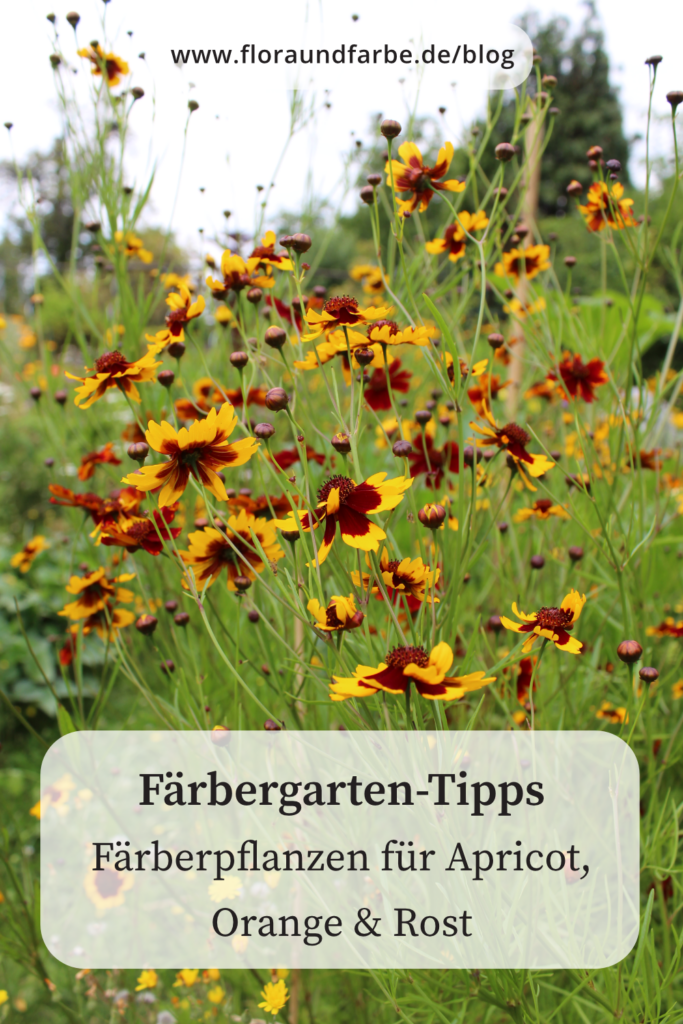
Leave a Reply